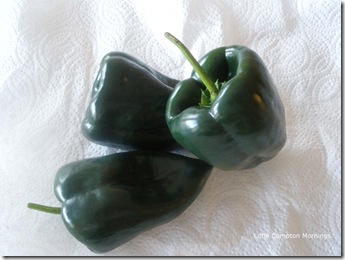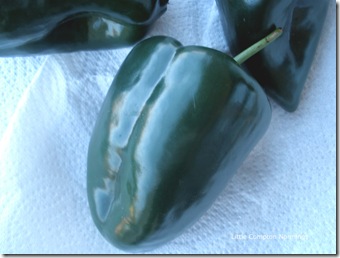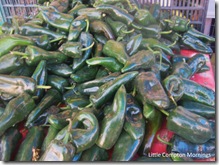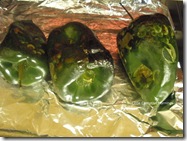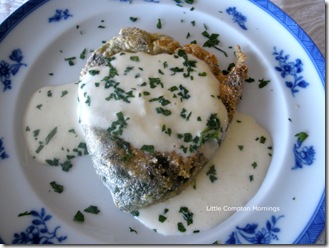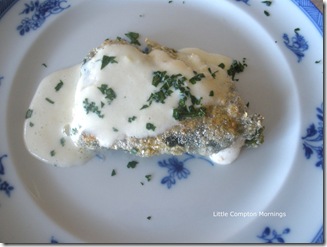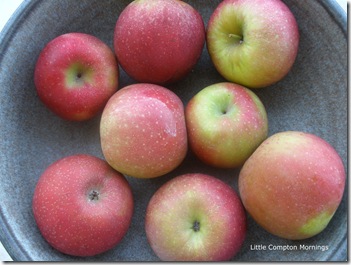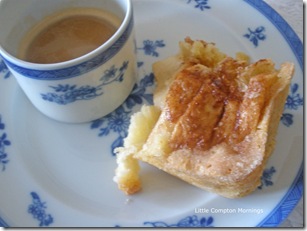
Like butter, pork fat has been out of favor for decades except in pockets of New England and the South. I’ve known people to react with disgust when I say that my pie crust or biscuits are made with lard, or that I fry my chicken or chiles rellenos in lard. A friend even once refused a freshly made glazed doughnut because it had been fried in lard. Insane, I know. Needless to say, I generally remain silent on the matter of using goose or duck fat to oven-brown my potatoes.
The tides are turning back, however. We now know (as my father always knew) that margarine is suspect. Butter is better for you than the margarine you grew up on. We know that pure lard is better than Crisco, and better yet than butter. We know that “fat-free” as a way of life may actually be life-threatening. People are talking about fat in a good way again, and we are even starting to celebrate its inimitable fatness. Last year the truly beautiful book, Pork & Sons, exalted all things pig; recently, another attractive paean has been published, called, simply, Fat. It’s subtitle, An Appreciation of A Misunderstood Ingredient, with Recipes, aims to change the misguided mind on the subject.
This all makes us happy in New England, where salt pork remains a fat of choice for traditional cooking, and lard retains the blue ribbon for the flakiest crust (see photo above left…). There’s nothing like the holidays to get people to digress from their habits—some of them, such as wholesale denial of the pleasures of good eating, irrational if not downright self-destructive. Christmas is fat’s chance; take advantage of it.
LCM Pork Cake
Pork cake is a very old New England favorite. It may look a bit like fruitcake, but it is considerably different and, I think, much better. The recipe lends itself to adjustment according to personal taste or on-hand convenience. You can use glacé fruit in this cake, especially citron or citrus peels, dates or apricots (very good), raisins (traditional), and other kinds of nuts (or none). Some more “modern” recipes contain eggs; mine, like most of the old ones, does not. Adjust spices too, to taste, as long as they are very fresh. Makes one loaf or 3 mini loafs.
½ cup currants
½ cup best-quality dried cherries (not from the supermarket)
2 T muscatel (or sherry or port)
1 lb fat-only salt pork, to obtain 1 cup (see Note)
1 cup boiling water or coffee
½ cup molasses
½ cup dark brown sugar
1 cup sugar
3 cups flour
½ tea baking soda
1 tea ground cinnamon, preferably Vietnamese
½ tea freshly grated nutmeg
½ tea ground cardamom
¼ tea ground allspice
¼ tea ground cloves
Preheat oven to 300 F.
Put the currants and cherries into a small bowl with the muscatel and set aside.
Working carefully with a sharp, thin knife such as a slicer, and holding the salt pork horizontally on a board, remove the skin and discard. For safety, wash your hands and the knife frequently. If the fat is coated with salt, rinse it well and pat dry with paper towels. Put the pork fat into a food processor with the metal blade and process until it is well-ground and beginning to look creamy. Pack well into a 1-cup measure; use some of the leftover to grease a full-size bread pan or 3 mini bread pans, and freeze the rest.
Put the cup of fat into a large bowl and pour the boiling water over it; stir. When it is cool, stir in the molasses and the brown and white sugars. Sift 1 cup of the flour with the spices over the fruit and mix well. Sift the remaining flour and the baking soda into the fat-sugar mixture, then fold in the floured/seasoned fruit. Let it stand for an hour or so if you have the time.
Fill the pan(s) about ¾ full (do not overfill) and bake in the low oven, about 1 hour 15 minutes for the small pans, or 1 ½ hours for the large, or until a toothpick comes out clean. Let cool in the pans on a rack before turning out.

Note: If you cannot find all-fat salt pork, buy a larger amount of regular salt pork and cut off the lean, reserving for another use. You may also be able to find salted fat back, now being made as a kind of substitute for all-fat salt pork, which is disappearing rapidly (traditionally, fatback is unsalted).







































